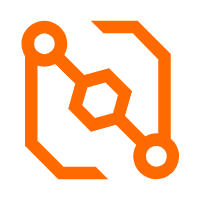WAF is a Web Application Firewall. A Web Application Firewall (WAF) enables the protection of your web applications by standing between the Internet and your web applications. WAF monitors and filters out web traffic that travels to and from your application. WAF works within the seventh layer of the OSI model and provides a defense mechanism against certain types of attacks, including SQL injections, cross-site scripting, Challenge Collapsar, and many more. WAF identifies malicious web business traffic, scrubs and filters the business traffic, and then forwards normal traffic to your server. This prevents your web server from being intruded and ensures data and business security.
A web application or a REST API hosted in a cloud is a common scenario for most developers. Cloud-based WAFs thus use all the advantages of WAFs and exchange knowledge about threat detection among all service tenants, which enhances outcomes and speeds up detection rates. The entire group learns from an assault that shares a single cloud-based WAF service with every website. Clients do not need to make any software or hardware modifications and tunings to their framework when using cloud-based WAFs, and can easily defend their websites from threats by applying tailored rules and deciding on the aggressiveness of security.
Much like the website can be accessed by online clients, hackers can perform malicious interactions as well. SQL injections, cross-site scripting, and file executions are the majority of attacks that we see. As they restrict traffic and search out malicious interactions, a WAF is designed to protect the website from these and other attacks as well. Hackers are swift and smart and can weave code into even the most secure websites that are not WAF-protected.
WAF helps to protect your website against various web attacks and to guarantee website security and availability. It leverages both core defense capabilities and big data capabilities to achieve reliable web security. WAF has the following rules:
Adjusts web protection policies to enable swift protection before patches are released for rectification of web application vulnerabilities.
The WAF compared to Firewall means Web Application Firewalls compared to Network Firewalls.
Web applications are covered by a WAF by targeting Hypertext Transfer Protocol (HTTP) traffic. This varies from a traditional firewall, which creates a buffer between network traffic, both external and internal.
To evaluate all HTTP communication, a WAF sits between external users and web applications. It then detects malicious requests and blocks them until they enter users or mobile apps. As a consequence, WAFs guard against zero-day threats and other application-layer attacks from business-critical web applications and web servers. As organizations grow into new digital initiatives, this is increasingly necessary and can make new web apps and application programming interfaces (APIs) susceptible to attacks.
To avoid the possibility of attacks, a Network Firewall protects a protected local area network from unauthorized access. Network Firewall's main purpose is to distinguish a protected area from a less secure zone and to monitor communications between the two. Any device with a public Internet Protocol (IP) address can be reached outside the network without it and is potentially at risk of attack.
The main advantage of using a WAF in the cloud, as opposed to an on-premises firewall, is that setup and installation time are minimal. In addition, you get 24/7 monitoring and automated responses to firewall-related incidents, which means you don’t have to worry about your staff constantly monitoring the firewall in order to deal with problems.
Alibaba Cloud WAF uses machine learning to reduce false positives, which is one of the features that I found particularly fantastic about the tool. In addition, the monthly subscription includes protection and reporting.
To use the AWS WAF, the first thing to think about is the creation of Access Control Lists (ACLs). If you do not understand how a firewall works, how to create one, and where you start working, a good deal of research will be necessary. Initially, the rules of entry and exit need to be clear. For the inexperienced, it is possible to block everything or release everything. You can have a whole environment with a WAF, but it’s completely unprotected because of rules misapplied.
AWS WAF is comprehensive—from prior notification in the creation and configuration of rules, rather than a firewall. To use AWS WAF, you need to be a person who knows firewalls well or be able to request support from someone who does. And keep in mind that there is a charge per amount of ACLs and the number of access requests to your application. As of now, fewer ACLs means lower cost, but also a less secure application.
Alibaba Cloud WAF and AWS WAF are both useful tools for securing web-based applications. As noted above, Alibaba Cloud WAF’s machine learning features make it an especially convenient tool in situations where your firewall configuration and monitoring need to be as automated as possible and you want to avoid false positives. AWS WAF, on the other hand, offers more detailed configuration options—although with that detail comes a steeper learning curve. To use AWS WAF effectively, you need to have deep experience with ACLs and firewall configurations; Alibaba Cloud WAF is arguably a better WAF choice for admins with less firewall experience.
If you'd like to test the Alibaba Cloud WAF, you can take advantage of a free trial here.
Alibaba Cloud offers a powerful Web Application Firewall (WAF) to protect your cloud-based services and web sites from common techniques and threats posed by hackers. This tutorial will walk you through the process of purchasing the WAF service and setting the service up for use.
To use the Alibaba Cloud WAF you'll need to have a web-based application up and running that you wish to protect. You'll also need:
Please check here for a tutorial on how to set up WAF.
Alibaba Cloud WAF service detects and blocks malicious traffic directed to your websites and applications. WAF secures your core business data and prevents server malfunctions caused by malicious activities and attacks.
Alibaba Cloud WAF protects core website data and safeguards the security and availability of websites.
Alibaba Cloud Web Application Firewall is a service that competes and leads many other WAF solutions available but is different from the Cloud Firewall service we discussed previously. Alibaba Cloud WAF is primarily used as a defense mechanism to protect your website and applications. WAF identifies malicious traffic generating from the web and filters it out to allow the normal traffic flow without interruptions.
The rapid growth of innovative technologies has brought about new opportunities for online businesses around the world. People today are not only used to, but also rely on the internet to carry out their daily lives, including shopping, playing games, watching movies, and almost everything else. Globally, Internet traffic will grow 3.2-fold from 2016 to 2021, a compound annual growth rate of 26%. The growth of e-commerce in the US jumped by more than 30% in 2020, accelerating the shift to online shopping by nearly 2 years.
However, this has also introduced new challenges for enterprises when scaling up/out to meet the requirements. Online business owners are closely monitoring their websites because any negative result of page load time will impact the conversation rate. Improving website performance is an always-on task for the DevOps team.
Managed security and faster performance are what online business is investing heavily today to protect and drive more business success.
This article shares a step-by-step instruction on how to use Alibaba Cloud Anti-DDoS Pro, Web Application Firewall (WAF), and Cloud Firewall together to protect your online business. We will also discuss how to use Alibaba Cloud CDN to improve website performance at the same time.
Test: Which has better performance? ApsaraDB for RDS or a User-Created MySQL Database
RDS for MySQL: Read-only Instance Learner and X-Paxos Consensus Protocol Integration

2,593 posts | 790 followers
FollowAlibaba Clouder - July 23, 2020
Dikky Ryan Pratama - May 5, 2023
Alibaba Clouder - December 21, 2017
Alibaba Clouder - February 21, 2020
Alibaba Clouder - January 12, 2021
Alibaba Clouder - July 11, 2019

2,593 posts | 790 followers
Follow WAF(Web Application Firewall)
WAF(Web Application Firewall)
A cloud firewall service utilizing big data capabilities to protect against web-based attacks
Learn More EventBridge
EventBridge
EventBridge is a serverless event bus service that connects to Alibaba Cloud services, custom applications, and SaaS applications as a centralized hub.
Learn MoreMore Posts by Alibaba Clouder